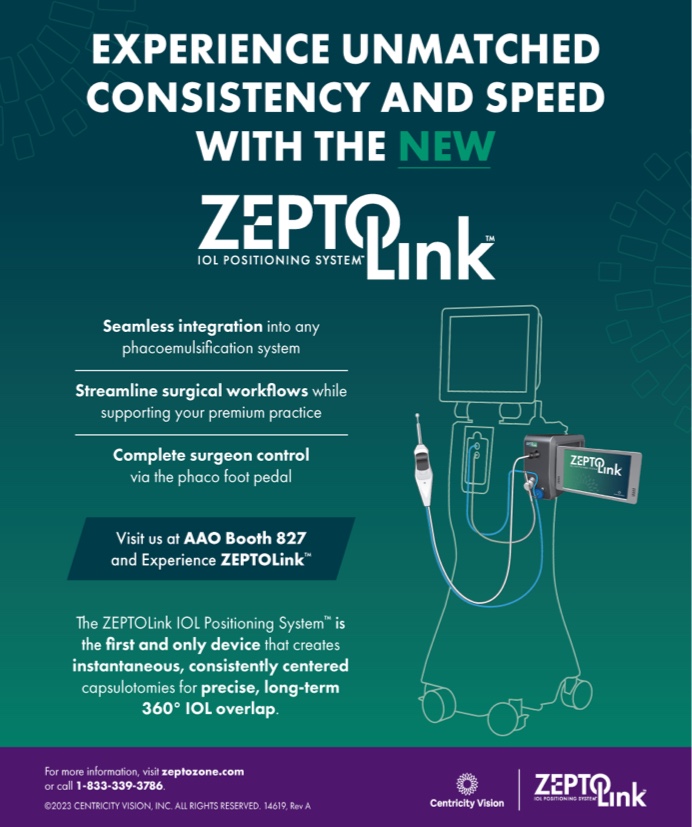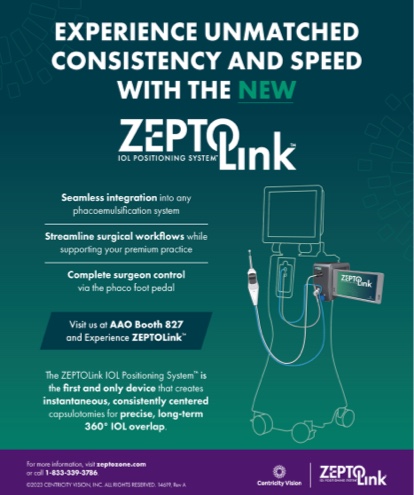| I was interested in my surgical colleagues' thoughts on stromal hydration. The rate of endophthalmitis has risen during the last few years, and the incision's integrity (or lack thereof) may be one causal factor. Interestingly, all of the respondents believe stromal hydration is beneficial but only as an adjunct, and they maintain that meticulous construction of the cataract incision is an important factor in its strength. |
| –William J. Fishkind, MD, Section Editor |
MICHAEL E. SNYDER, MD
I have found stromal hydration to be a useful adjunct in clear corneal cataract surgery. Although the width, length, and location of the wound relative to the limbus are vital interrelated factors in determining the incision's structural integrity, I believe that the dynamics of a clear corneal wound are beyond the mere mechanics of its construction and must also take active physiologic principles into account. I create the clear corneal incision just in front of the anterior conjunctival insertion, still within the limbal vascular arcade. I create a 3-mm wide wound and aim to have a tunnel of approximately 2.5 to 3.0mm in length. I like to finish my case with the IOP in the upper range of normal so as to reduce the chances of inadvertent hypotony.
I believe that stromal hydration allows the adequate approximation of the anterior and posterior aspects of the corneal tunnel. This step thereby facilitates not only a closed wound from physical apposition, but it also allows and augments at least three physiologic processes. First, there is a physiologic "sticking" of the stromal surfaces similar to the early, rapid adherence of LASIK flaps, perhaps due to the stromal glycosaminoglycan content.
Second, the immediate full-tunnel apposition that stromal hydration augments creates a watertight intratunnel anterior-posterior (subepithelial to subendothelial) pressure gradient. As a result, the subtunnel endothelial pump can create an active suctioning force that pulls the roof of the tunnel tightly against the floor. A similarly snug apposition can be achieved by tightly pressing the roof of the tunnel against the floor for 30 seconds with a cellulose sponge, perhaps by squeezing some of the stromal fluid into the intratunnel space to create the vacuum seal by a similar mechanism.
Lastly, making the incision through the limbal arcade allows an accumulation of a small amount of blood to track along the external aspect of the wound, lay down fibrin and fibronectin, and create an additional physical and physiologic barrier. Even if the limbal capillaries have sealed before the end of the procedure, nicking the edge of a nearby capillary will provide ample fresh clotting factors to the wound.
Some critics of clear corneal incisions assert that stromal hydration gives evidence of a lack of structural integrity while they also presume no effect of the endothelial pump. In contradistinction, this step augments the important physiologic wound-related components, which cannot be accounted for in ex vivo cadaver studies. It is counterintuitive to a student of physics to imagine that the endothelial pump would only detergesce the floor of the incision without also drawing the roof into tighter apposition.
GEORGE BEIKO, BM, BCh, FRCSC
I perform stromal hydration of the corneal incision as part of my strategy for constructing the wound during sutureless cataract surgery. My goals are to minimize induced astigmatism, ensure the wound's closure, and prevent postoperative infection. My strategy includes a posterior limbal approach and a hinged Langerman's construction with a 2.8-mm square incision. The posterior limbal incision decreases the risk of endophthalmitis when compared with a clear corneal incision.1 The Langerman's three-step incision has been shown to self-seal and to have the greatest stability compared with otherwise constructed wounds.2 Creating a square incision, less than or equal to 3.2 X3.2mm ensures the continued integrity of the wound and its resistance to the greatest amount of deformation.3 Finally, hydrating the wound at the end of the case ensures that the wound will self-seal without requiring me to overfill the anterior chamber to attain the same goal. The latter approach concerns me in glaucomatous eyes with advanced cupping where this might lead to visual field loss.
I hydrate the wound in the manner described by Michael Wong, MD,4 namely by employing suprainsional pockets. This approach seals the wound without causing its deformation or the transient induction of astigmatism, as may occur upon the hydration of the sides of the incision. I always test the wound by applying pressure to its posterior lip at the end of the case to ensure that the stated objectives of a self-sealed wound have been met and the risks of endophthalmitis have been minimized.
BRADFORD J. SHINGLETON, MD
I hydrate the stroma of every corneal incision, whether I create it with a keratome, superblade, or diamond knife. Surgeons including myself have shown that hypotony (an IOP of less than 5mmHg) can occur in up to 5 to 20 of uncomplicated, temporal clear corneal phaco cases at 30 minutes postoperatively.5 As a result, anything that can enhance the integrity of an incision, even for a short time, is beneficial.
Stromal hydration has few downsides and may enhance the security of a corneal incision for minutes to hours after surgery. It is critical to appreciate, however, that this step is only a relatively minor factor as it relates to the structural integrity of a corneal incision. Most important is proper construction. If it is to be left unsutured, I favor a beveled incision parallel to the iris with the cut's length approaching its width (a nearly square incision).
By moving the keratome incision slightly posterior and incorporating the posterior limbus and the edge of conjunctiva, the configuration will not be too anterior in the cornea with the blade's entry. A corneal incision created in this manner, coupled with stromal hydration, is consistently self-sealing and resistant to collapse. I will not hesitate to place a single, buried, 10?0 nylon suture if I have any question about the incision's integrity. I test all incisions at the completion of the operation to confirm an absence of leakage, a stable anterior chamber depth, and a satisfactory IOP.
JASON LEVINE, MD
I regularly perform stromal hydration, both at the clear corneal temporal wound and the paracentesis. I find it is helpful in the initial reapposition of the wounds' margins. After hydration, I will overly inflate the anterior chamber and test the pressure by palpation. I check that the incision is watertight with a Weck-Cel sponge (Medtronic Xomed Ophthalmics, Inc., Minneapolis, MN), as I reduce pressure by releasing fluid from the paracentesis. At that point, I will further test the incision by using the sponge to press posteriorly to the external margin.
The situations in which I find stromal hydration most helpful are cases where the dimensions of the wound are less than ideal or when some stretching of the incision has occurred during phacoemulsification. Stromal hydration is not a cure-all, however, and is no substitute for a properly constructed incision. If I can easily elicit any leakage while testing with a Weck-Cel sponge, then I will place a 10?0 nylon suture across the temporal incision. My threshold for placing a suture is low, and I do not generally repeat hydration of the wound if the first attempt failed
Section Editor William J. Fishkind, MD, is Codirector of Fishkind and Bakewell Eye Care and Surgery Center in Tucson, Arizona, and Clinical Professor of Ophthalmology at the University of Utah in Salt Lake City. He acknowledged no financial interest in the product or company mentioned herein. Dr. Fishkind may be reached at (520) 293-6740; wfishkind@earthlink.net.
George Beiko, BM, BCh, FRCSC, is in private practice in St. Catherine's, Canada. He acknowledged no financial interest in the product or company mentioned herein. Dr. Beiko may be reached at (905) 687-8322; george.beiko@sympatico.ca.
Jason Levine, MD, is Clinical Instructor in Ophthalmology at the University of Arizona, and he is in private practice in Tucson, Arizona. He acknowledged no financial interest in the product or company mentioned herein. Dr. Levine may be reached at (520) 327-3487; jlevine46@comcast.net.
Bradford J. Shingleton, MD, is Assistant Clinical Professor in Ophthalmology at Harvard Medical School and Clinical Instructor in Ophthalmology at Tufts University School of Medicine in Boston. Dr. Shingleton also practices at Ophthalmic Consultants of Boston. He acknowledged no financial interest in the product or company mentioned herein. Dr. Shingleton may be reached at (617) 573-1018; bjshingleton@eyeboston.com.
Michael E. Snyder, MD, is in private practice at the Cincinnati Eye Institute and is Voluntary Assistant Professor of Ophthalmology at the University of Cincinnati. He is on the speaker's bureau of Alcon Laboratories, Inc. Dr. Snyder may be reached at (513) 984-5133; msnyder@cincinnatieye.com.


